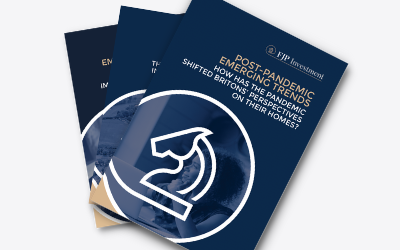What is Subletting?
Subletting is a prevalent practice across the UK housing market, creating both opportunities and challenges for tenants and landlords alike. This guide delves into the multifaceted aspects of subletting, clarifying its definition, legality, and the respective rights of tenants and landlords. By examining the benefits, pitfalls, and best practices for subletting, we aim to empower both parties with the knowledge they need to navigate this common yet often contentious aspect of renting.
Understanding Subletting and Its Nuances
Subletting occurs when a tenant rents their property, or part of it, to another individual, known as the subtenant. It’s a straightforward concept; however, complications arise when tenants fail to communicate openly with their landlords, often leading to misunderstandings and potential legal issues.
The Importance of Transparency
A core issue surrounding subletting is the lack of transparency. Tenants may feel pressured to sublet without permission due to financial constraints, ultimately jeopardising their tenancy. Understanding that honesty and seeking consent can mitigate risks is essential.
The Legal Framework for Subletting in the UK
In the UK, the legal landscape regarding subletting can be intricate, affected by various factors such as the type of tenancy agreement in place. Below, we outline the key considerations that define the legality of subletting:
Types of Tenancy Agreements
- Assured Shorthold Tenancies (ASTs): Tenants under ASTs often have a clearer path to subletting, but they need to obtain permission from their landlord.
- Social Housing: Tenants in social housing may face stricter regulations prohibiting subletting altogether.
- Shared Ownership: Similar restrictions can apply here, which typically prevent owners from subletting their share without prior approval.
Rights of Tenants
The tenancy agreement is the primary source dictating a tenant’s rights regarding subletting. Careful review of this document will reveal explicit or implicit permissions regarding subletting. Furthermore, under certain conditions, tenants have rights to sublet, provided they act in good faith and seek the necessary approvals.
The Role of Permission
To ensure a legal subletting arrangement, tenants must always seek permission from their landlord. Denying this request without valid reasoning could result in unlawful subletting charges against the tenant, potentially leading to eviction.
Reasons Why Tenants opt for Subletting
There are several reasons why tenants may consider subletting their homes, primarily revolving around financial challenges and personal circumstances.
Financial Relief
In instances where tenants encounter difficulties meeting their rent payments, subletting can offer an immediate financial solution. Bringing a subtenant can provide relief by sharing the rental burden.
Companionship and Security
Additionally, many tenants may prefer to live with others for companionship or safety reasons. Subletting can transform a solitary living situation into a shared experience, which can enhance wellbeing and foster a sense of community.

Risks and Consequences of Unlawful Subletting
Not all subletting arrangements are legal. Understanding unlawful subletting is crucial for both tenants and landlords to avoid potential repercussions.
What Constitutes Unlawful Subletting?
Unlawful subletting typically occurs when:
- The tenant fails to obtain permission from the landlord.
- The tenancy agreement explicitly prohibits subletting.
- The tenant is part of a housing scheme that does not allow subletting.
Consequences for Tenants
Engaging in unlawful subletting may result in eviction, loss of security deposits, and significant legal challenges. It is vital for tenants to understand the potential pitfalls of not adhering to the terms of their tenancy.
Legal Responsibilities
Though a tenant may bring in a subtenant, landlords typically have no contractual obligation to these subtenants if they were not involved in the leasing process. However, if the landlord begins to collect rent from the subtenant, a legal relationship may inadvertently form, complicating matters further.
Strategies for Landlords When Considering Subletting Requests
Landlords find themselves in a unique position when tenants request to sublet. The decision to allow or deny such requests requires careful deliberation.
Assessing the Situation
Before making decisions, landlords should assess each request on a case-by-case basis, taking the following into account:
- The quality and reliability of the original tenant.
- The reasons behind the tenant’s request.
- The potential impact on the property and existing lease.
Communicating Expectations
Clear communication regarding the conditions under which the tenant may sublet is crucial. Landlords should explicitly state their policies regarding subletting in the tenancy agreement and communicate these expectations directly to the tenant.
Creating a Subletting Clause
To protect their interests, landlords should include a well-defined subletting clause in the tenancy agreement. This clause should cover:
- The requirement for tenants to seek prior written consent.
- The conditions under which consent can be granted or denied.
- Obligations of the subtenant and responsibilities of the original tenant.
Best Practices in Subletting Arrangements
Implementing best practices in the subletting process can lead to smoother transactions and prevent misunderstandings.

Conducting Thorough Background Checks
Landlords should always conduct diligent checks on potential subtenants. This could include credit checks, references from previous landlords, and proof of employment. By verifying the reliability of a subtenant, landlords can help ensure that the integrity of the original tenancy is maintained.
Drafting a Subletting Agreement
A separate subletting agreement should be established between the original tenant and the subtenant. This document should outline:
- The rental amount and payment schedule.
- Duration of the subletting arrangement.
- Responsibilities for utilities, maintenance, and damages.
Open Communication Channels
Maintaining an open line of communication between landlords, original tenants, and subtenants can help build trust and transparency. If all parties are clear about their responsibilities and expectations, the likelihood of disputes is significantly reduced.
Regular Property Inspections
Landlords should consider conducting regular inspections of the property to ensure it is being maintained properly and to check for any signs of unlawful subletting. These inspections act as a preventive measure against potential issues and reassure the landlord that their property is in good hands.
Seeking Professional Advice
For landlords uncertain about the complexities of subletting, consulting with a letting or property management agent can provide clarity. These professionals can offer guidance on legal requirements, tenant relationships, and best practices for managing subletting requests effectively.
Conclusion
Subletting can indeed be a beneficial arrangement for both tenants and landlords, providing flexibility and financial solutions during challenging times. However, it’s essential for both parties to have a strong understanding of the legal framework, rights, and responsibilities associated with subletting.
By fostering transparent communication, implementing comprehensive tenancy agreements, and adhering to best practices, tenants can navigate the subletting landscape with confidence, while landlords can protect their interests effectively.
Whether you’re a tenant considering bringing in a subtenant or a landlord faced with a subletting request, understanding the nuances surrounding subletting can help create a harmonious and legally sound rental experience. This knowledge not only safeguards investments but also promotes an environment of mutual respect and cooperation in the UK housing market.
ARE YOU READY TO START INVESTING?
Subscribe to our mailing list now for exclusive deals, investment guides and the latest information from the property market.







